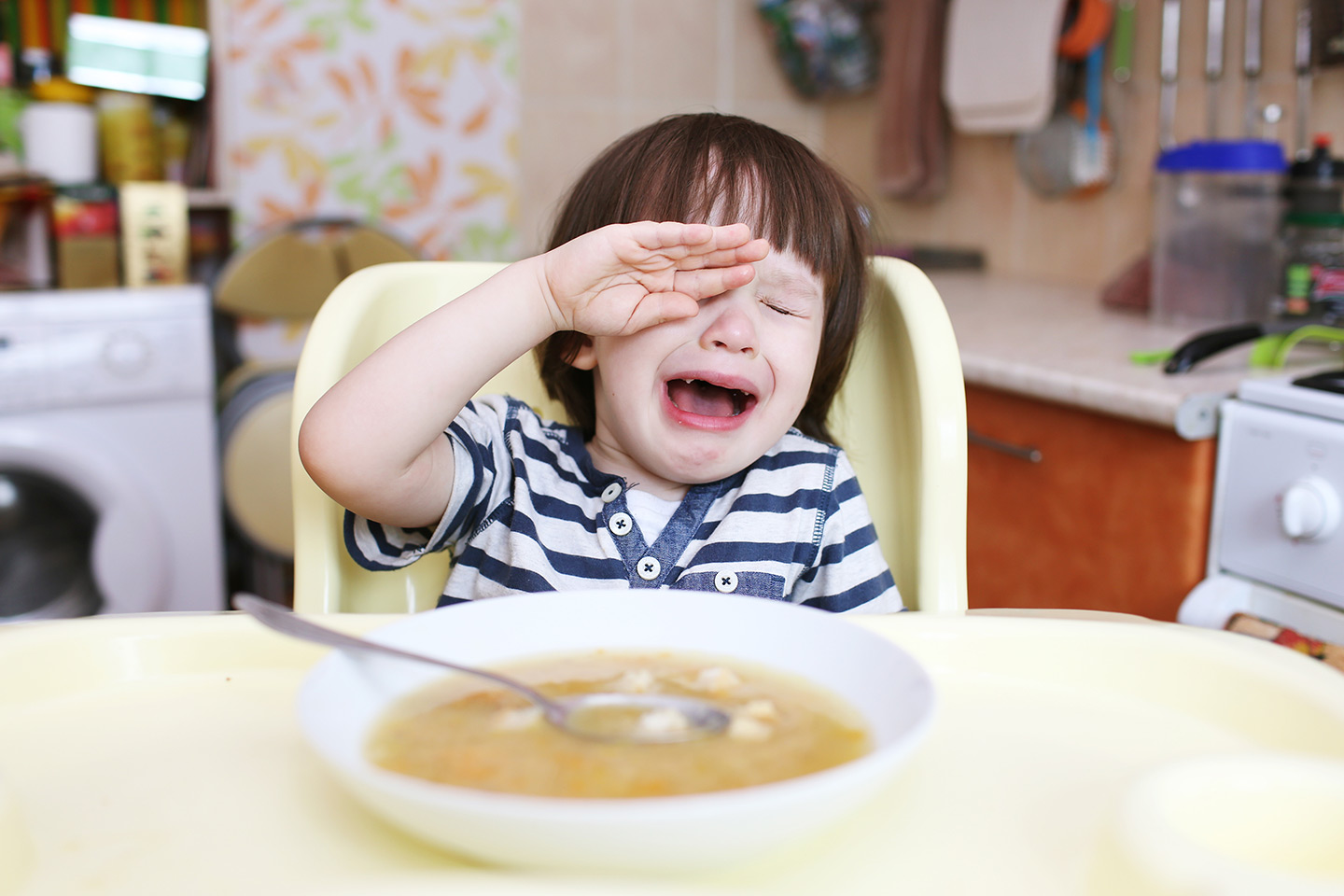Is the dinner table a scene of tears and tantrums? It’s normal for toddlers to go through a stage of fussy eating – it’s all part of their development and a way of asserting their independence. The good news is that most children will become less fussy as they get older. In the meantime, here are a few tips to help:
- Be a good role model. Children are more likely to try foods they see other people enjoying so eat a wide variety of foods yourself and eat together with your child.
- Involve your child in meal preparation. They are more likely to eat a meal they have helped to make.
- Persist! You may need to offer a new food up to ten or more times before it becomes familiar and is accepted by your child.
- Avoid bribes and rewards. This can lead to more dislike for the food they are being bribed to eat and an increased preference for the ‘reward’ food.
- Have a mealtime routine – keep the timing of meals regular, always eat at the table and avoid distractions such as television.
- Make it attractive and interesting by serving different shapes and colours on the plate.
- Encourage self-feeding from an early age – it might be messy but will encourage your child to take an interest in their food.
- Offer your child a range of healthy foods but let them choose which they want to eat.
- Don’t pile up the plate. Kids have small stomachs so do best with small meals and snacks.
- Know that children’s appetites can vary from day to day. They are good at judging their hunger and fullness signals so don’t force them to eat.
- Stay calm! As difficult as it can be, try not to make a fuss if your child won’t eat. Keep family mealtimes relaxed and enjoyable.
Worried about your child’s fussy eating? See your GP, child and family health nurse or an accredited practising dietitian.
For more information on fussy eating:
- Nutrition Australia – Panicky parents, fussy eaters
- Better Health Victoria Healthy Living
- Proven Ways to Help Your Picky Eaters
References:
- Taylor et al. Picky/fussy eating in children: Review of definitions, assessment, prevalence and dietary intakes. Appetite. 2015 Dec;95:349-59. doi: 10.1016/j.appet.2015.07.026. Epub 2015 Jul 29.
- Carruth et al. Prevalence of picky eaters among infants and toddlers and their caregivers’ decisions about offering a new food. J Am Diet Assoc. 2004 Jan;104(1 Suppl 1):s57-64.
- Dovey et al. Food neophobia and ‘picky/fussy’ eating in children: a review. Appetite. 2008 Mar-May;50(2-3):181-93. Epub 2007 Sep 29.
- Cooke. The importance of exposure for healthy eating in childhood: a review. J Hum Nutr Diet. 2007 Aug;20(4):294-301.


